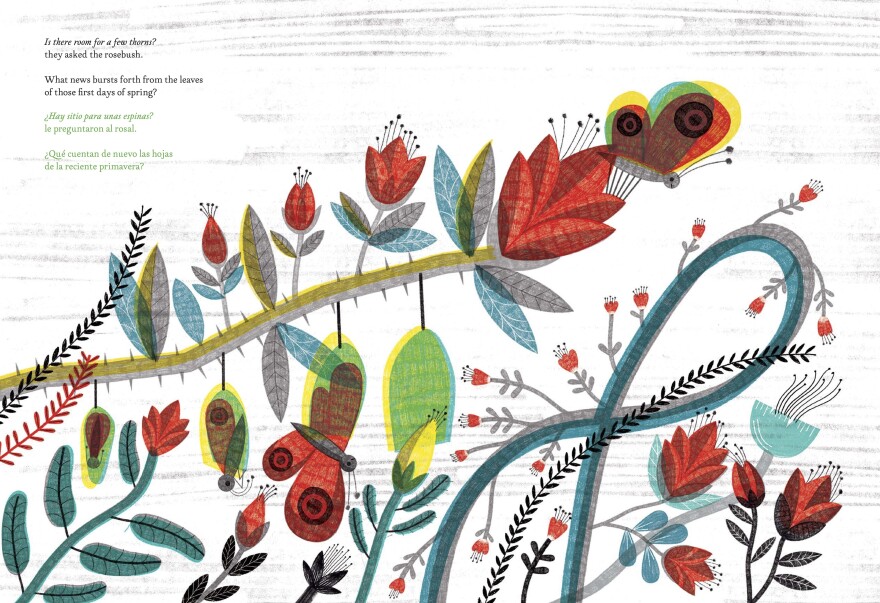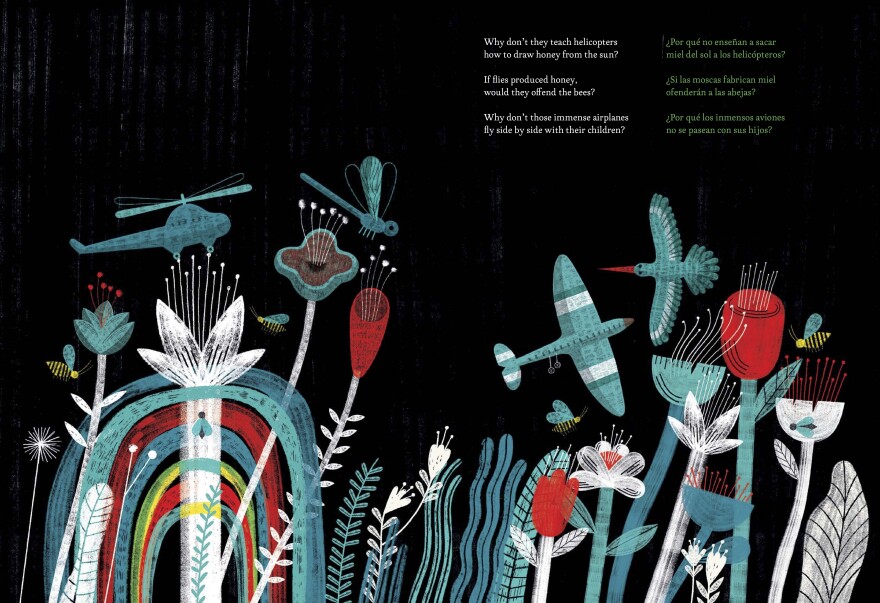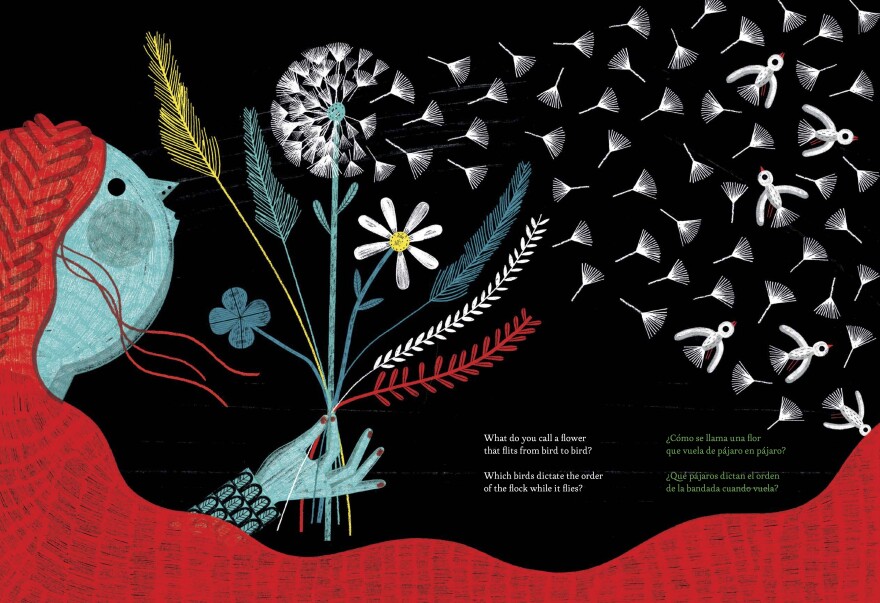Who shouted for joy at the birth of the color blue? When I look once more at the sea, does the sea see me or not see me? Why do the waves ask me the same questions I ask them?

These, and hundreds more, are questions posed by Nobel Prize winner Pablo Neruda in his Libro de las Preguntas (Book of Questions). Compiled throughout his life and published a year after his death in 1973, Neruda's thoughtful and playful questions are well known in Latin American literature. Now, a new bilingual, illustrated selection of Neruda's questions has been published by Enchanted Lion Books, giving anglophone readers — and especially children — an opportunity to interrogate the world along with the Chilean poet.
"Children are constantly asking things because in their eyes, everything is new. So they ask questions to structure the world they're coming into," said Paloma Valdivia, the book's illustrator.
In Latin America — especially in Chile — many kids grow up well acquainted with these question poems. In fact, Valdivia herself learned to read through the poetry of Gabriela Mistral and Pablo Neruda, and she was made to memorize some of these questions, with melodies added to help. Valdivia said this new bilingual version, which took almost five years to make, can bring a new generation of children closer to poetry.

The new edition is meant for everyone in the family. The book is large and contains playful fold-out pages and whimsical illustrations that help bring readers into the imaginative world of the questions.
The original book has more than 300 questions that span a wide range of topics: from death and dreams to politics, literature, seasons and time. But in curating the selection, translator Sara Lissa Paulson and editor Claudia Bedrick wanted to highlight those that would be in the realm of experiences that young children are excited to discover. They chose 70 questions mostly related to the relationship between humans and the natural world.
"I fell in love with the way that Latin America just has a different kind of perspective about the natural world, and I really think that our country here can learn from these books," said Paulson, "The questions that we've selected are about rain, about clouds, about trees, about animals. What we envisioned is that they would spark even more questions focused on humans and our world."

Instead of presenting Neruda's full poems, the new edition weaves the selected questions into a visual world.
These illustrations were some of the hardest she's ever done, said Valdivia, who has been working as a book illustrator for 20 years. For this edition, Valdivia pulled from her own childhood in Chile and her knowledge of Neruda's poetry to illustrate the geography of his poems, but she also visited the poet's three homes in Chile for inspiration. There, she found hints of what the poet was thinking of when he wrote these questions or ideas of ways to conceptualize them for younger audiences, to introduce them to both Neruda and South America.
In illustrating these questions, Valdivia didn't want to hint at any answers. In fact, part of the magic of Neruda's questions is not that the reader finds an answer but rather finds even more questions.

This meditative approach to poetry is what makes the book's publication fitting at this time, said Valdivia.
"At a time when we're bombarded with noise, screens, violence and ultimately craziness in a world that is so damaged right now, having those moments of introspection, contemplation, and thinking of nature can help us cultivate questions and cultivate our own inner worlds," she said.
Copyright 2022 NPR. To see more, visit https://www.npr.org.




